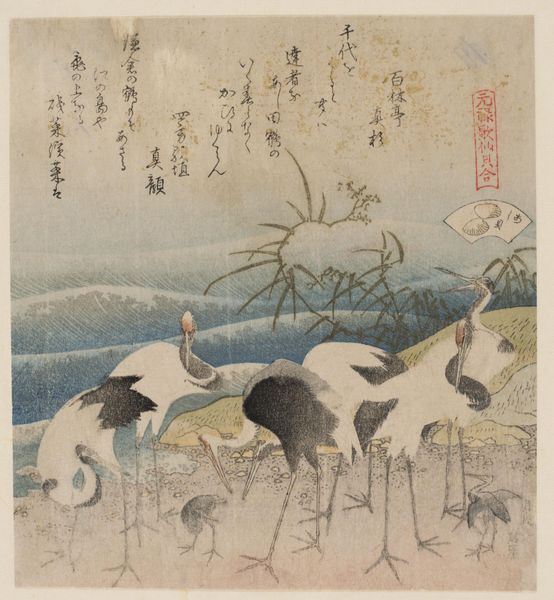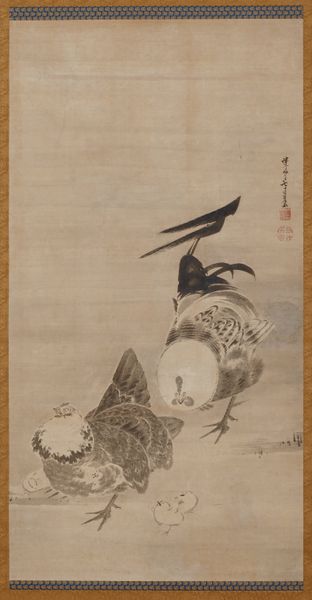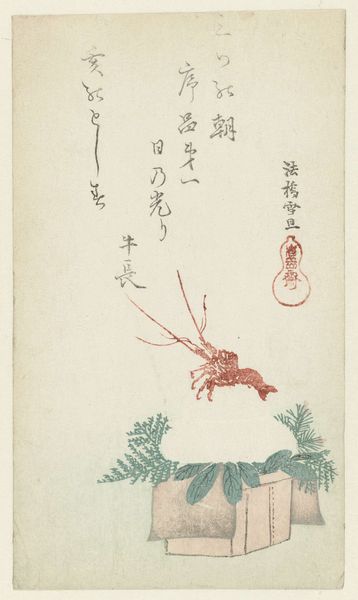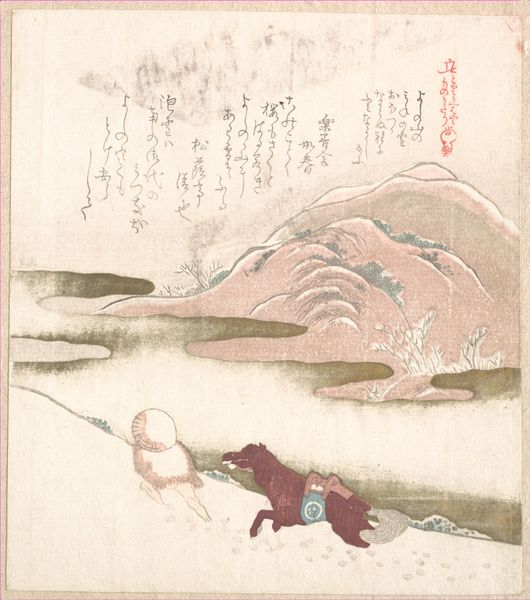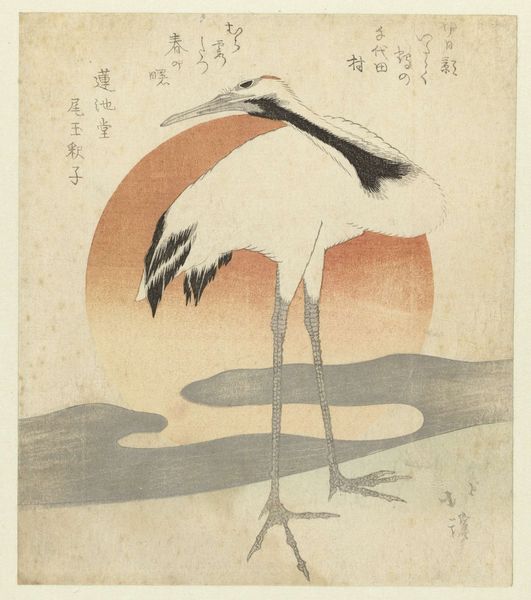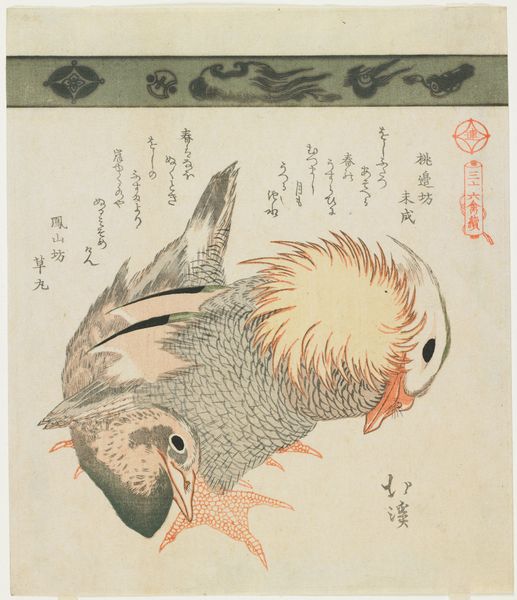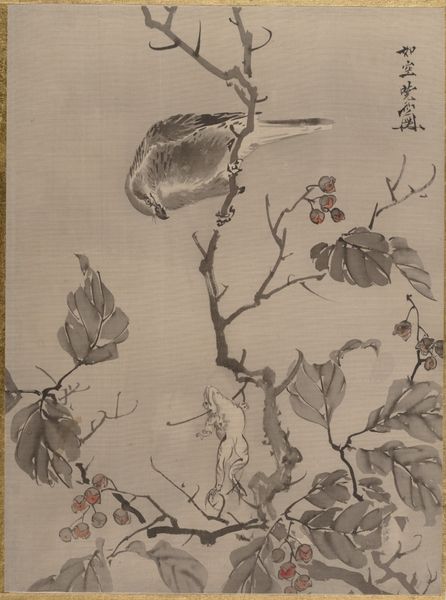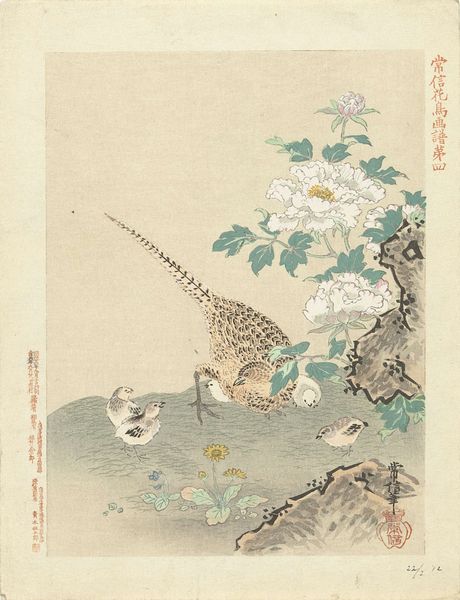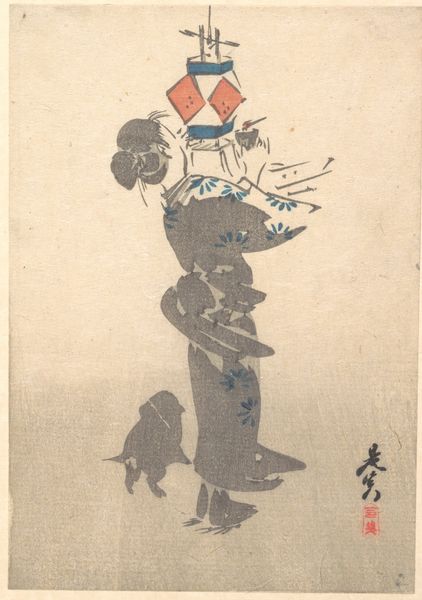
print, watercolor
#
water colours
# print
#
asian-art
#
landscape
#
ukiyo-e
#
figuration
#
watercolor
#
line
Dimensions: 11 × 8 1/4 in.
Copyright: Public Domain
Curator: Before us is Suzuki Harunobu's "Cranes at the Sea Shore," a watercolor print dating to around 1768, a notable example of ukiyo-e. Editor: The immediate feeling is one of delicate serenity. The muted colors and elegant lines create such a calming presence. Curator: Harunobu emerged during a pivotal shift in ukiyo-e. This print showcases the transition from earlier monochrome prints to the vibrant, full-color printing techniques that defined the later Edo period. This reflects, in a way, the rising merchant class's increasing cultural and economic influence, doesn't it? The imagery of leisure becomes central. Editor: Absolutely. Cranes, of course, are potent symbols in Japanese culture, often representing longevity, happiness, and marital fidelity. Placing them by the shore suggests a liminal space, between land and sea, between states of being. I'm also wondering about access... ukiyo-e, at its core, made art affordable and accessible, right? Curator: Exactly. And further than mere affordability, they provided images for people to enjoy outside formal settings such as the imperial court or religious temples. Harunobu catered to this taste for relatable, aesthetically pleasing scenes. Editor: Still, I’m curious about the constraints imposed by gender in artistic representation and viewership. Ukiyo-e prints largely depict women in specific social roles or as objects of desire. Do we see this echoed in Harunobu's broader body of work, and how did this impact his reception then and now? Curator: Certainly, and it is vital that we question how representations of women, then and now, are constructed and circulated. However, his innovations significantly expanded the possibilities within the form itself. His skillful application of color layering created unprecedented depth and realism. He didn't just replicate the world, but stylized it, as demonstrated in the ethereal treatment of the water. Editor: True, that’s undeniable. It feels almost like a dreamscape. And thinking about those floating cranes... they capture a certain grace in motion. Curator: The entire print is imbued with a sense of ephemeral beauty, characteristic of Harunobu. Looking closer, notice how he captures these very particular features, almost mannered in form. Editor: Right, the gestures are so studied, it evokes feelings of care and elegance. Overall, this print is an amazing combination of aesthetic sophistication and meaningful cultural symbolism. Curator: A convergence we find throughout this dynamic era.
Comments
No comments
Be the first to comment and join the conversation on the ultimate creative platform.

